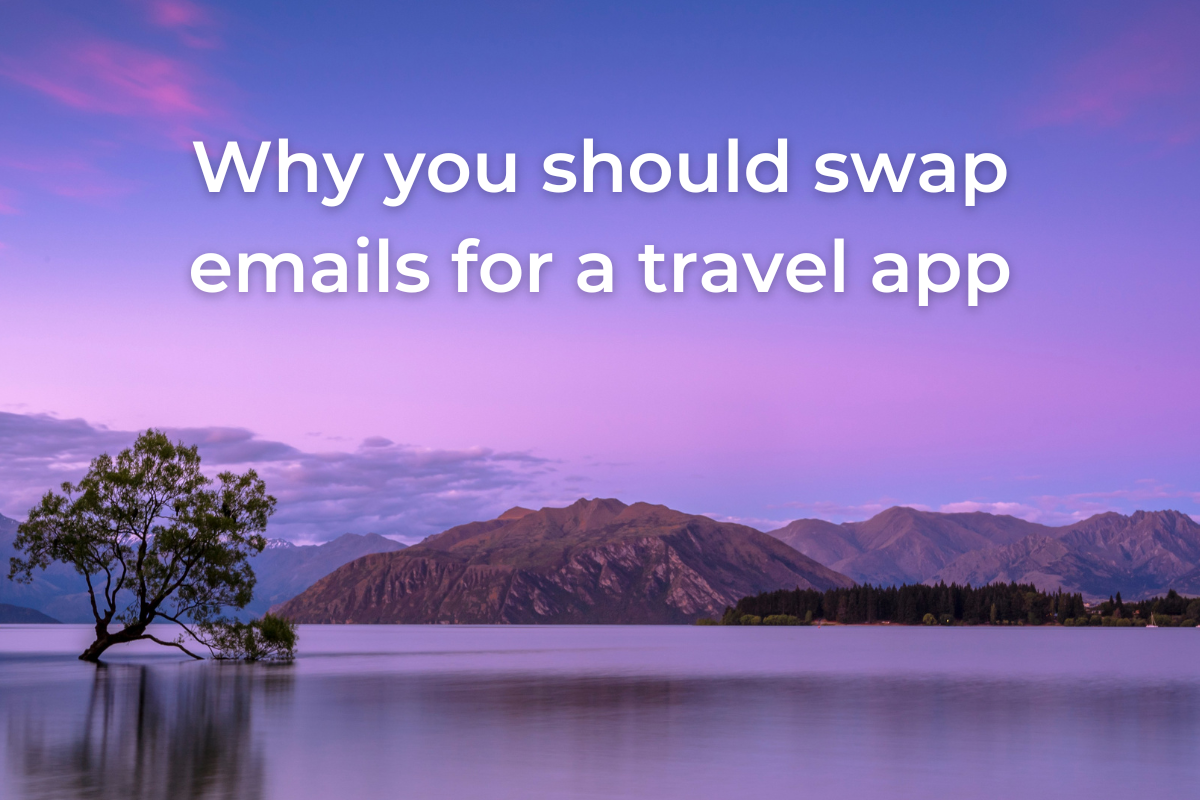The problem with paper
It’s January 2012, and Tony Bean is stuck. He’s in Geneva airport on his way home from a skiing holiday, and his flight has been delayed by several hours. Before the trip, Tony had duly printed his flight information – and, of course, folded it up and never looked at it again. He realised in that moment, with his travel details stowed in some unknown pocket, that this system was outdated – and that something had to change.
Cut to the following year, summer 2013. Alisdair Luxmoore and his wife are on safari in Tanzania, en route to the Ngorongor Crater. Sitting in the back of a Jeep, surrounded by bags, Alisdair wants to check the details of their next flight – so, naturally, he has to embark on a three-minute rummage to find the information. He turns to his wife, only to realise that she’s playing solitaire on her iPad. And that’s when it dawned on him.
“This information,” he says, waving his rather sad, crumpled itinerary whilst pointing at the ipad, “should be on there.”
Collaboration… and finding the cash
At this point, the two men were strangers. But Tony was the founder of an agency that created apps and mobile strategy, and Alisdair, of a virtual travel company; both were well-placed to find a techy solution. And so, each in their own way, they got the ball rolling.
When he finally made it home from Geneva, Tony began by calling up his tour operator, VIP Ski. He pitched them an app that would contain their clients’ chalet, resort and travel details in one place – a sort of rudimentary Vamoos. It was built; they loved it, and, more importantly, the clients loved it too. So, he thought, why wouldn’t other travel companies want to get in on the action?
Well… Because building an app is expensive. He set up meetings with all the major players in the business, and his pitch – “I can build you a fantastic travel app, but it’ll cost £100,000,” – was almost unanimously rejected. One travel company exec, Vanda Bauer, did express an interest, but still, she told him, it was too expensive.
Meanwhile, Alisdair had been researching how to build this app for his own company, Fleewinter. But everyone he approached said that it would be a minimum of £50,000 to get off the ground. Eventually, in February 2014, he turned to the trusty AITO noticeboard to ask if other tour ops had managed to find a way to get clients’ documents onto their devices. About ten people got back to him saying, “No, Alisdair, but if you do – we’re in.”
As luck would have it, one of those people was Vanda, who had met with Tony just a few days before. She put the two men in touch; they met the next day, and by March they had agreed to set up a business together.
Success, and a few surprises
Both Tony and Alisdair shared two core beliefs. The first, is that technology should simplify your life: with Vamoos, they are proud to have created a software that clients can access easily and immediately understand how it works. The second is that, from a B2B perspective, they wanted to ensure that that their product was available to every company – once you subscribe to Vamoos, everyone from large mainstream companies to two-man bands will get exactly the same benefits. This ‘democratised’ system is key.
Vamoos was officially introduced to the world in July 2014. By Christmas they had 15 travel companies signed up, and, by constantly re-investing, adding features and putting service at the heart of what they do, they grew to several hundred
But it didn’t all go as expected. In Tony and Alisdairs’ own words: “We designed Vamoos to be useful during the holiday, but the immediate feedback we got was that it was enhancing the whole experience before the holiday as well. There was no planning for that, no cleverness; in our desire to make everything easier, we stumbled across a way to improve anticipation. Now, it’s something that people get excited about. When customers book they immediately have something tangible to focus on and show off to their friends and family”
The rest, as they say, is history.
Featured Articles

Build or buy: choosing a travel app solution
July 23, 2024 by adminDare we say it… the reign of PDFs is almost over! In a world where travellers can find everything they need, from interactive visual itineraries to key travel documents, all within a single platform, it’s difficult to resist the appeal of a travel app. But the hard part isn’t deciding to embrace travel tech, it’s choosing which app solution is right for you.

3 reasons why you should swap emails for a travel app
July 16, 2024 by adminFor tour operators and travel agencies, the ability to communicate directly with travellers, share important travel documents and keep clients informed about itinerary changes is crucial – especially if you want to deliver an excellent overall experience. Here’s the bad news: emails are getting in the way. They’re outdated, time-consuming and easy for your clients to miss. Don’t worry though; we’re sharing 3 ways in which emails are letting you down, and showing you why an all-in-one travel app could be the solution to your problems.

Villa magic: detailed touches = unforgettable journeys
July 9, 2024 by adminIn our first villa travel blog, we looked at why villa travel companies need to ditch paper and emails to offer a more holistic, modern experience that matches client expectations. This time, we’re showing you how to go one step further by using travel tech to integrate trip-defining detail into that experience seamlessly.
Share: